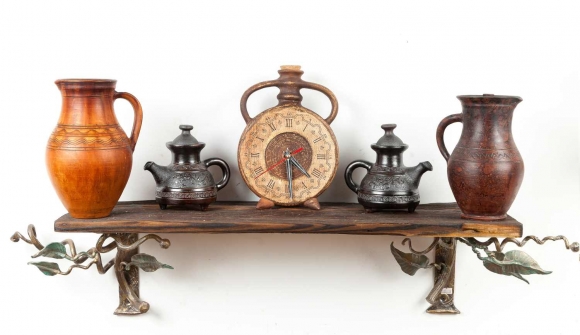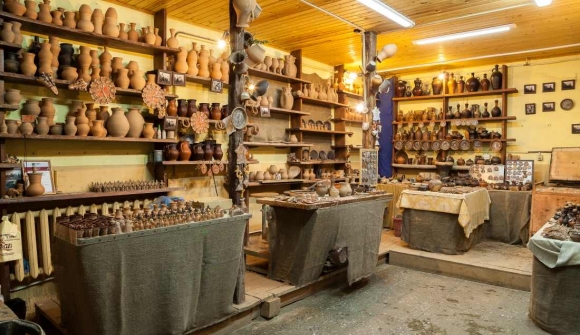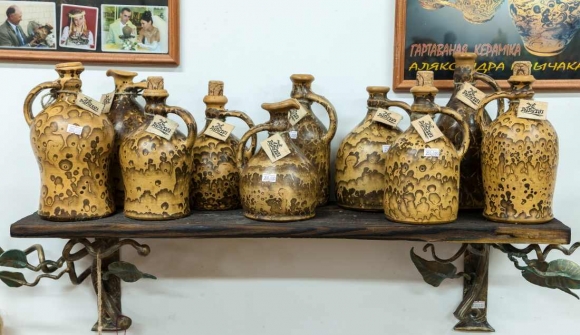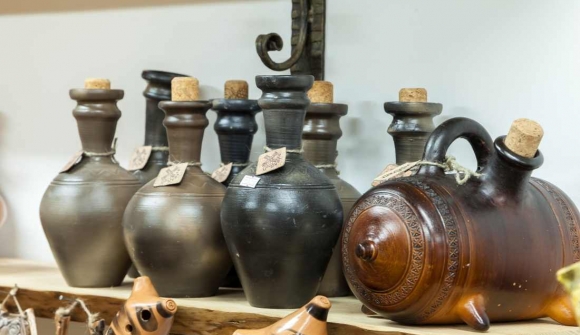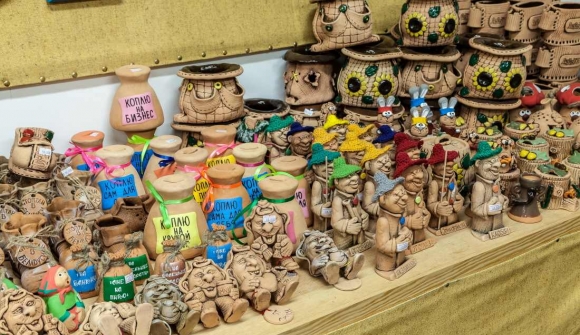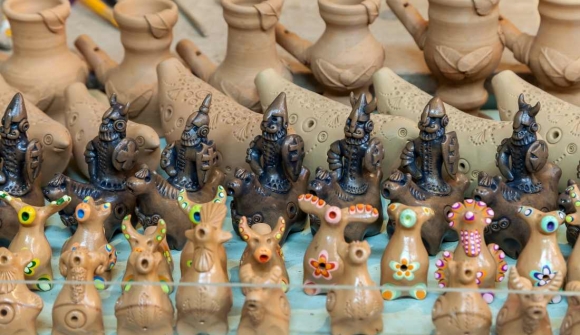Pottery Workshop
Origins Pottery has been known in Belarus since Neolithic times (about 10 000 years BC). Initially, the pottery was molded by hand, without subsequent heat treatment. Gradually, clay became the main component of the molding material. To increase its strength, clay was mixed with dried grass, bast fibers, crushed shells and sand. As an independent craft, pottery has been known in Belarus since the 10th c., when the first pottery wheels appeared in the country. 






The professionalism of Belarusian potters is proved by the fact that for many centuries their products were exported for sale abroad in large quantities. In the 17th c., our craftsmen were invited to the Muscovy and participated in the decoration of the Cathedral of the Intercession in Izmailovo, Gate Church of St. Andrew's Monastery, the Terem Palace and Church of the Savior in Moscow Kremlin.
Clay extraction and preparation
Clay is the main raw material in pottery. There are about 400 deposits of clay in Belarus. In old times, the raw materials were mined from an open pit with a shovel. As a rule, these deposits were located on the banks of ponds, on the slopes of the hills, at a distance of no more than 2-4 km from the place where a pottery shop was located. Mined material was taken to the yard and piled directly on the ground or in a storage made from poles and erected in the open air. After that, it was covered with water and allowed to mope and freeze until spring or even next fall. Then the clay mined was brought indoors and put in a special keeping place, called the "glinnik" (from Russian “glina” – clay).
Pottery Molding A potter puts a lump of clay at the center of a spinning pottery wheel, wets his hands with water and carefully shapes the workpiece, as even a small lateral run-out can destroy a future bowl. Then, in the middle of the clay workpiece the cavity is formed by thumbs, which is shaped into the bowl’s bottom. In the next step, the workpiece is turned into a cylinder of a required height. Generally, potters work with both hands – one is on the inside and the other one is outside. Hands move from the bottom upwards. With that, a craftsmen achieves both a larger cylinder height and a gradual thinning of its walls. Traditionally, the wall thickness for household utensils is about 5 millimeters. In the process of molding, hands must be constantly wet with water to make them not stick to the clay.
From the resulting cylinder the bowl is shaped. First, the base is refined, and then, by gently pushing the cylinder wall from the inner side, a potter extends the central segment. After that, by applying pressure from the outside the upper part is narrowed. The product is finished with a collar, or ring. Drying and Baking Crude pottery is dried for 2-3 days in a workshop (there are special shelves near ceiling), or in summer, if the weather is dry – on the street. At the end of the 19th c. pottery was baked in common household ovens or in kilns of various special designs. Such a kind of baking was time consuming and required great skill and dexterity. A significant part of the products often were damaged and spoiled.
Methods of processing ceramics
Waxed pottery is coated with hot bee’s wax. It helps to close pinholes, making the cookware suitable for a long-term storage of various fluids and products. Обварная ("рябая", "гартаваная") керамика в раскаленном состоянии погружается на короткое время в кислый раствор ржаной муки, что приводит к появлению неповторимого узора на поверхности и увеличению крепости. В старину такую керамику чаще всего использовали для приготовления пищи в печи. Boiled ceramics is immersed for a short time in anacidic solution of rye flour, which results in unique patterns on the surface and increases its durability. In the old days such ceramics were often used for cooking food in the oven. Black-smoked ceramics is obtained by creating an airless environment in the kiln, leading to the deoxidization of iron, which makes ceramics blue-black and particularly durable.
Glazed ceramics is produced by coating the surface of already baked products with the solution made from quartz sand and following re-baking, during which sand melts into the glass. |
|
+ 375 17 133-07-47
Phone/Fax |
+ 375 29 602-52-50
|
|
+ 375 17 132-11-77
Phone/Fax |
+ 375 29 603-52-50
|
| Download Particulars | info@dudutki.by |
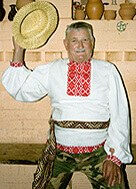
|
We invite you to visit us
on Friday till Sunday
Monday till Thursday are a day off
|
|
Mo-Th: days off
Fr-Sun: 1000 - 1800 (enter till 1700)
Dogs are not allowed
|

